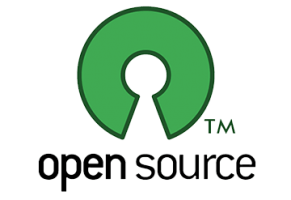Commercial-Quality Software
Open-source software has grown alongside the rise of the Internet, establishing a collaborative, decentralised development model where programmers worldwide contribute improvements and share their work openly through platforms like GitHub.
Its strength lies in transparency, flexibility, and universal accessibility, making it a cornerstone of modern digital innovation.
Why Open Source?
Open-source solutions today are as professional, secure, and efficient as proprietary ones. Many enterprise systems rely on open-source frameworks for their scalability, adaptability, and security.
Open-source technologies offer flexibility, cost efficiency, and long-term viability.
They are a strategic asset for developing robust, scalable, and independent IT infrastructures – enabling organisations to innovate securely while maintaining full ownership of their digital environments.
Key Advantages:
✅ Transparent and auditable source code
✅ Free or low-cost to deploy and maintain
✅ Highly customisable and scalable
✅ Rapid bug fixes and security patches
✅ Continuous innovation through community collaboration
✅ No vendor lock-in
✅ Extensive global support and documentation
Beyond the Myths: Open Source vs Proprietary Software
The perception that proprietary software is inherently more secure or professional is now outdated.
Modern open-source solutions comply with international standards and are used in mission-critical environments — from web hosting and financial systems to government platforms.
Notably, Linux-based operating systems power the majority of the world’s servers and cloud infrastructures.
Professional Integration of Open-Source Software
While open-source software is accessible to all, mastering it requires solid technical expertise.
To develop and maintain secure, high-performance solutions, professionals must understand:
🔹 Version control systems (Git, GitHub, GitLab)
🔹 Command-line operations and automation
🔹 Programming and scripting languages (Python, PHP, JS, Bash, etc.)
🔹 Package and dependency management
🔹 System and network administration
🔹 Security best practices and code auditing
🔹 Open-source licensing and collaboration workflows
AI-assisted auditing tools can further support developers by detecting vulnerabilities or inconsistencies in large codebases — provided they are used by skilled programmers who understand how to interpret and apply results responsibly.
Whether building a website, web application, or enterprise-grade platform, open-source technologies provide a reliable, cost-effective, and sustainable alternative to closed software ecosystems.
A well-designed, user-friendly website based on open frameworks enhances online visibility and credibility for both businesses and professionals.
The Long-Term Value of Open Source
Open-source software evolves organically and continuously, ensuring progressive improvements in code quality, security, and user experience (UX).
This continuous evolution fosters stronger architectures, long-term sustainability, and resilience against obsolescence.
As adoption grows, open-source drives a global ecosystem of businesses, developers, and service providers, promoting innovation, transparency, and digital independence.
Big Tech and Open Source
Major technology companies — Google, Apple, Facebook, Amazon, and Microsoft (GAFAM) — actively support open-source initiatives.
They release APIs, libraries, and frameworks used in modern web development, machine learning, and cloud computing. However, open source does not always mean free.
While the source code is publicly accessible, its use is governed by specific licences that define rights and restrictions.
Hybrid models combining open-source foundations with proprietary features are increasingly common, especially among startups, SMEs, and enterprise-level organisations seeking flexibility and compliance.











